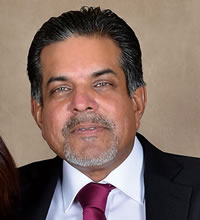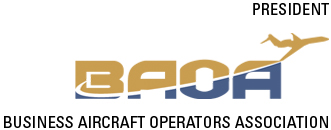Message from President, BAOA
 |  |
As we head into the final year of this present government, I would like to take a few moments to reflect on how the industry has fared in the past four years. Civil Aviation has been one of the fastest growing segments of the economy, and the “jewel in the crown” of the present government. With passenger traffic growing at more than 20 per cent CAGR, Indian airports are bursting at the seams. UDAN scheme was launched with much fanfare, and though the verdict on its success is still out, the scheme has definitely created a buzz in getting air connectivity to regional and remote areas, and the overall impact is positive. 28 airports have been added in the past two years, and we are finally seeing the plans for Navi Mumbai and Jewar, with a completion timeline in place. For the first time in the 70-year history of India, a National Civil Aviation Policy was released to give a direction to the growth of the civil aviation industry. Without getting into the politics of the sale of Air India, at least the government of the day has accepted that there is a problem with the national carrier, and has started looking at options to address it. Last, and not the least, after many years, we see a friendly and responsive regime in the corridors of Rajiv Gandhi Bhavan. With the team led by the Hon’ble Minister of Civil Aviation, supported by the very capable MOS, Shri Jayant Sinha, Secretary Shri RN Choubey, Joint Secretary Mrs Usha Padhee, and the entire team at the Ministry of Civil Aviation need a special mention for bringing much transparency in the functioning.
The Business Aviation sector has seen a lot of positives too, though a lot still needs to be done. For the first time, the government understands the importance of General and Business Aviation (G & BA) and has started addressing the issues in a systematic way. Periodic interactions are taking place between BAOA and the Ministry, and between the stake holders and DGCA. The process is slow, but steady. One of the key concerns remains about infrastructure planning for G & BA in the existing, and the upcoming airports. It is time that the government addresses this issue and starts looking at the legitimate rights of the G &BA industry for parking and access to airports. Dedicated airports for business aviation is the next logical step and is the standard norm globally. However, with the government struggling to find land for construction of greenfield civil airports, it is going to be difficult to plan for dedicated airports for G & BA as we find in other major cities of the world. These airports act as the pivot around which the eco system of G &BA thrives, be it FBOs, MROs, stocking for spares, and other support agencies. Seletar (Singapore), Teterboro (New York), Farnborough (London) and le Bourget (Paris) are some of the shining examples of this. It is time that a dialogue takes place between the government and the stakeholders of the G & BA industry to address this problem and search for ‘out of the box’ solutions. Till then, we can only hope for single digit growth for our industry.
The charter industry is seeing some disruptions, with technology changing the way the business is being done. The role of the charter brokers is slowly coming under question, and it is becoming increasingly easy for the end user to be directly connected with the operator.
The charter industry is seeing some disruptions, with technology changing the way the business is being done. The role of the charter brokers is slowly coming under question, and it is becoming increasingly easy for the end user to be directly connected with the operator. However, the role of the broker is still relevant, especially for political and government charters, where it becomes easier for political parties to deal with one entity, rather than many different operators. The potential for charter operations is huge, with only a fraction of the demand that is being met today. We still have huge gaps in Air Ambulance services, aerial photography operations and other special mission requirement. Several smaller airports are still not accessible due to watch hour limitations, and the difficulty in getting timely permissions. For international charter requirements, there are only a handful of operators who are capable of undertaking the charter, and normally lose out to international charter operators, who have a distinct advantage in pricing, operational flexibility and availability. In this issue, we have provided a platform to some charter operators and brokers to give out their views on their challenges and how they see the industry evolving in time.
We have also changed the ‘look and feel’ of the issue to make it more vibrant and easier to read, and I would like to thank the design team of SP for their support in this. I hope you like it.
Please fasten your seat belts and enjoy this edition of BizAV India. Please feel free to contact me at rohitkapur@baoa.in with your feedback and suggestions. I look forward to getting your inputs on how to address the issues at hand.
Happy Landings and Safe Flying!
| Rohit Kapur President, Business Aircraft Operators Association |





